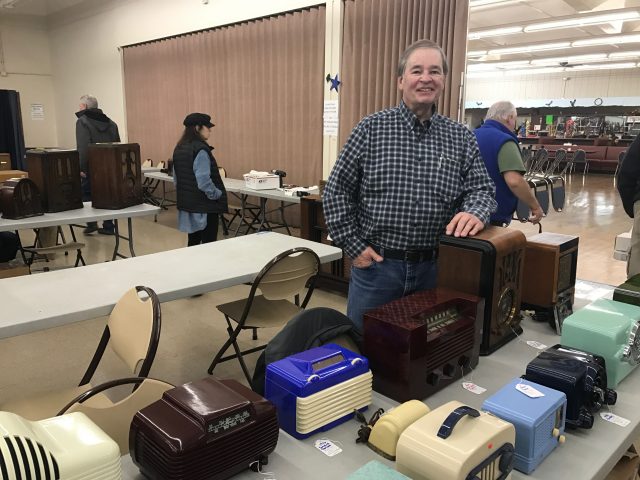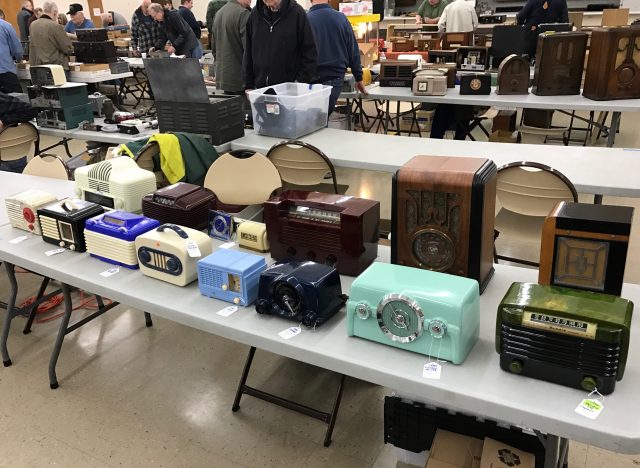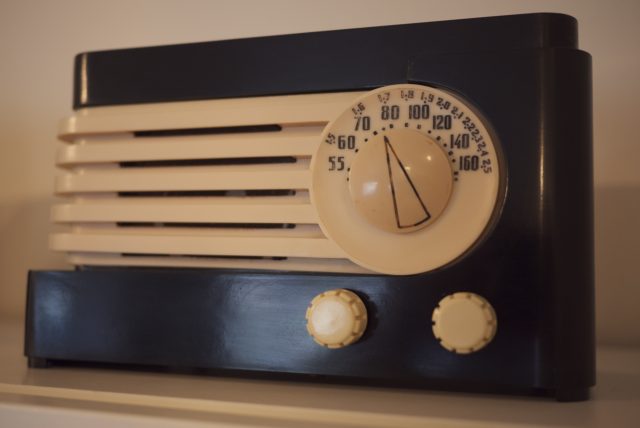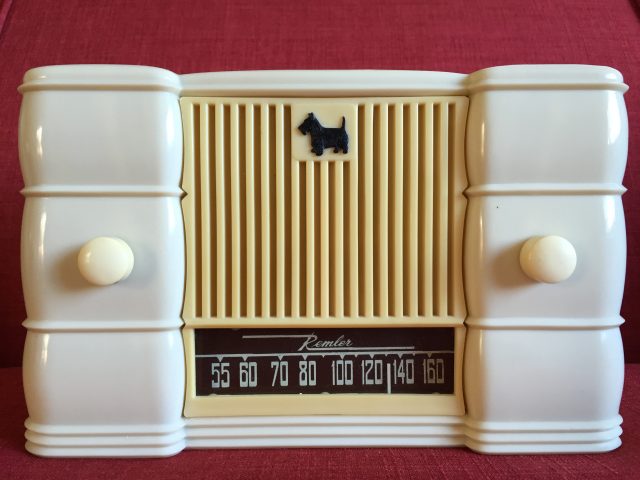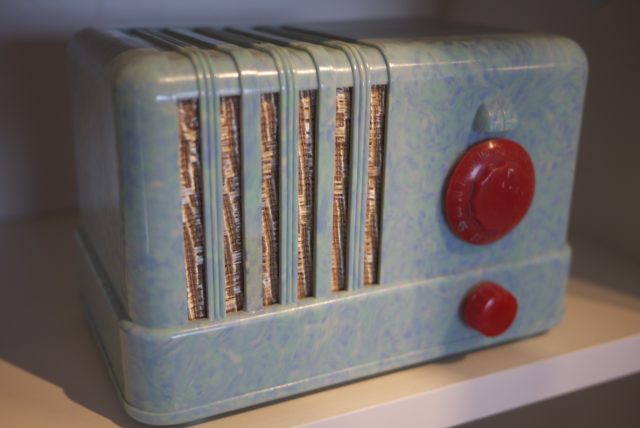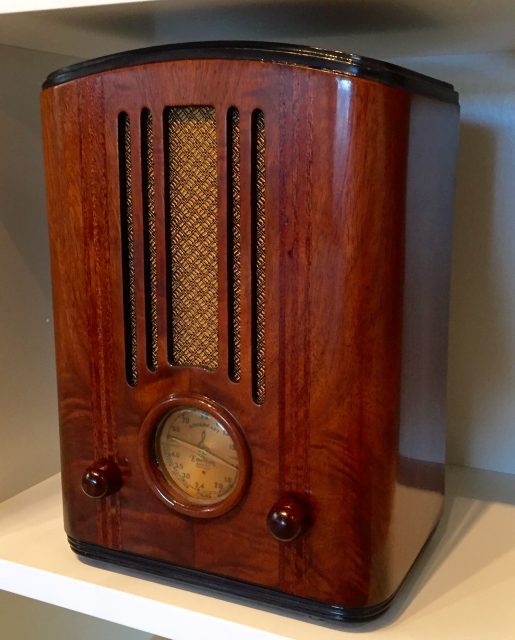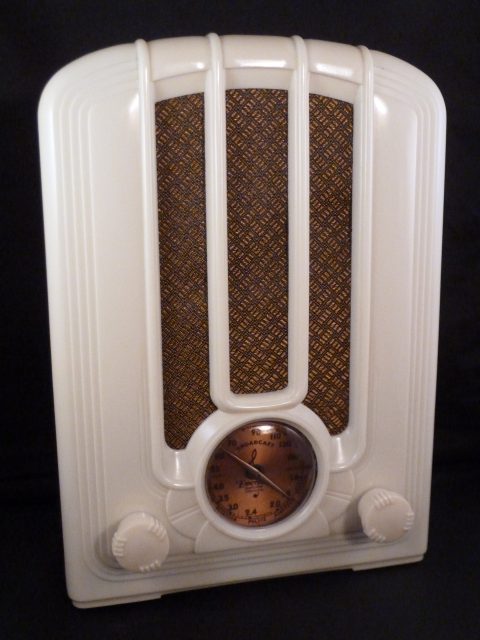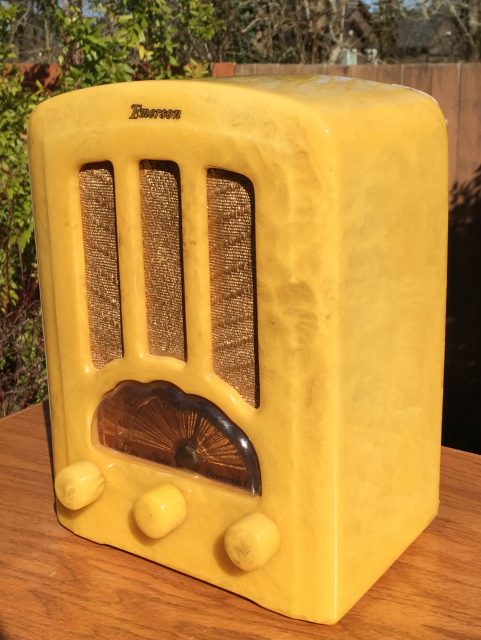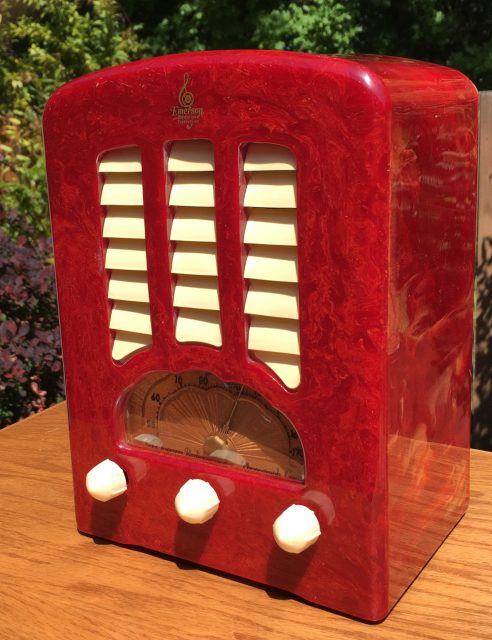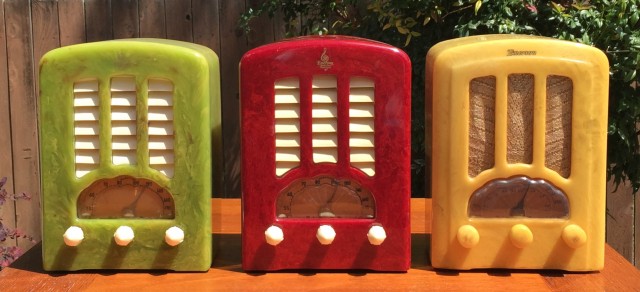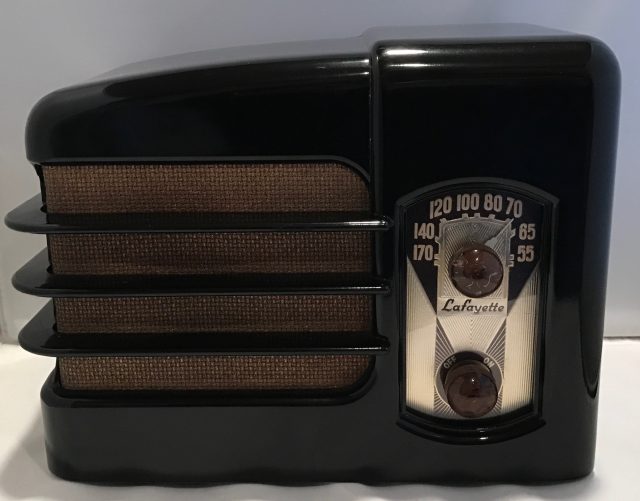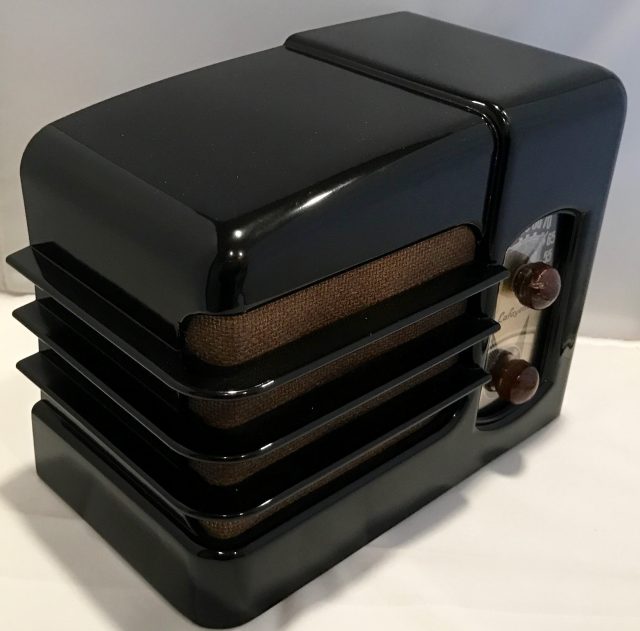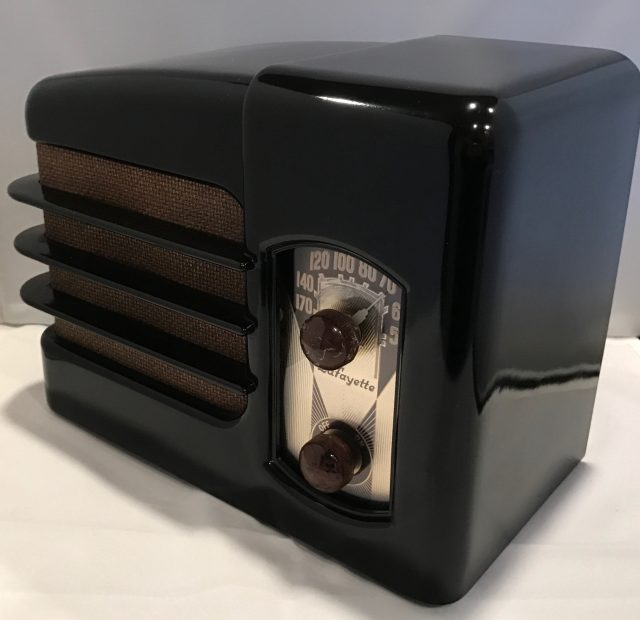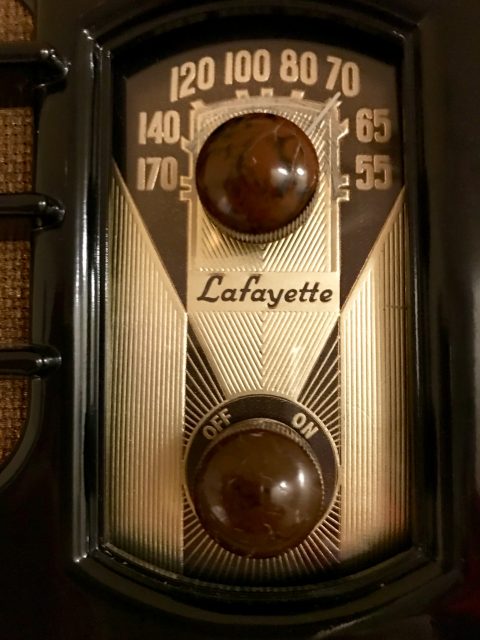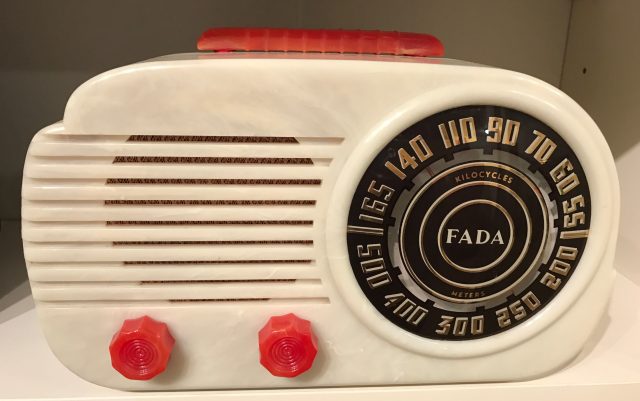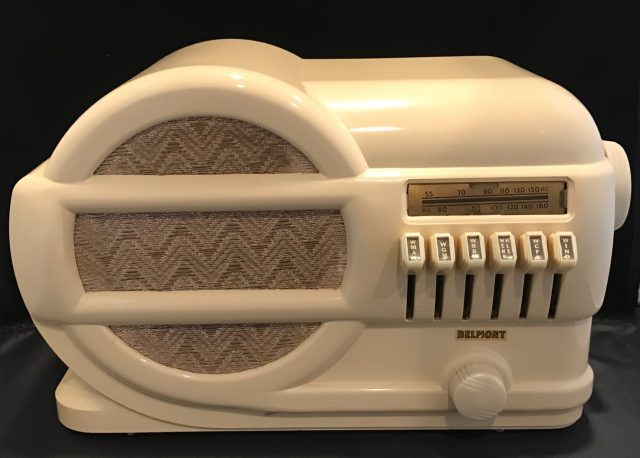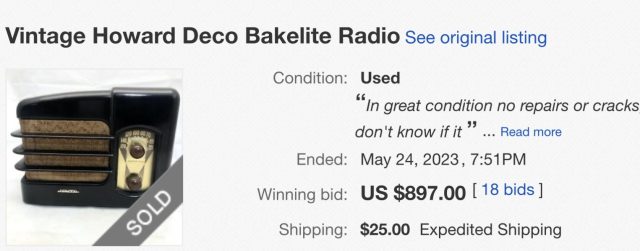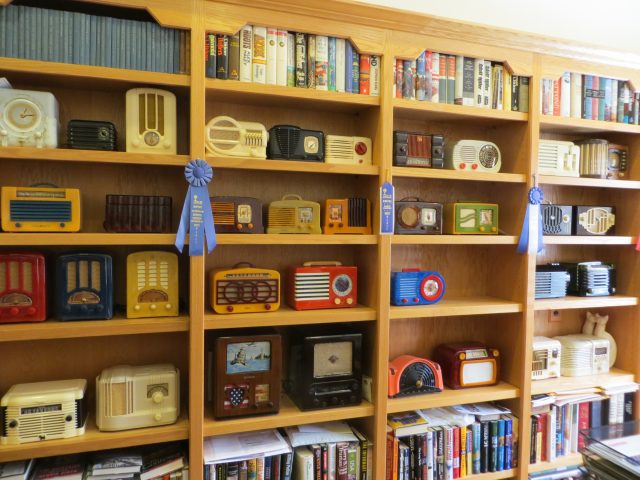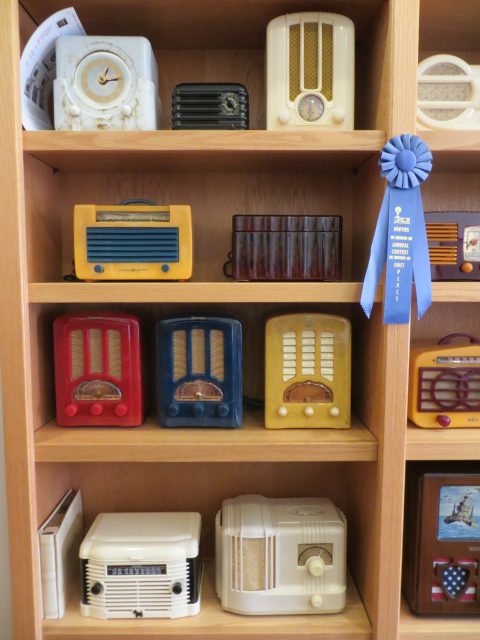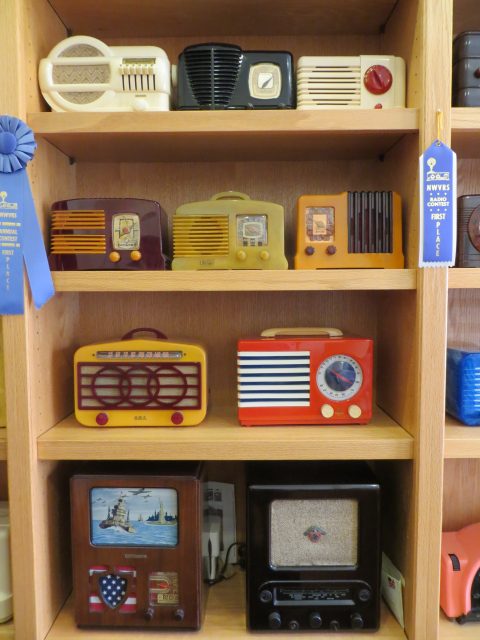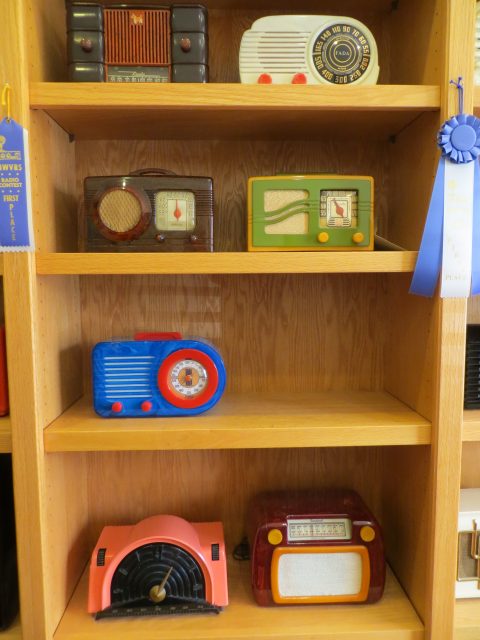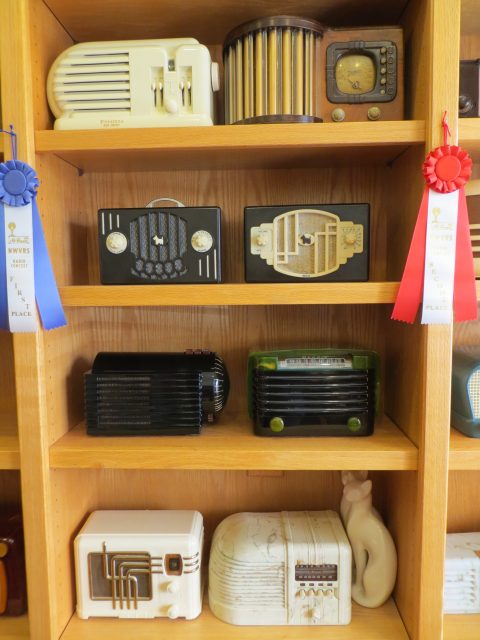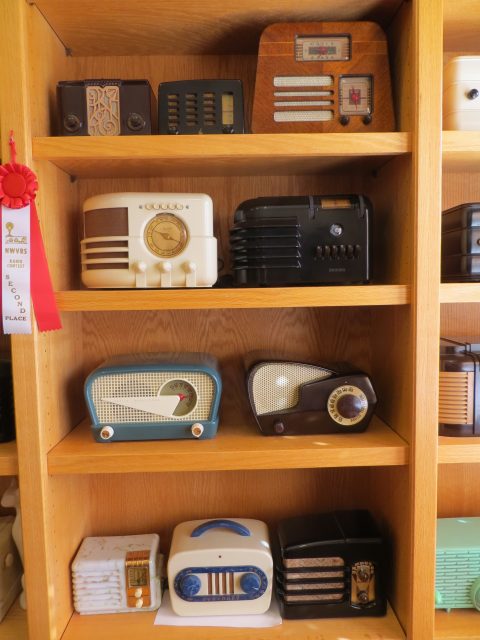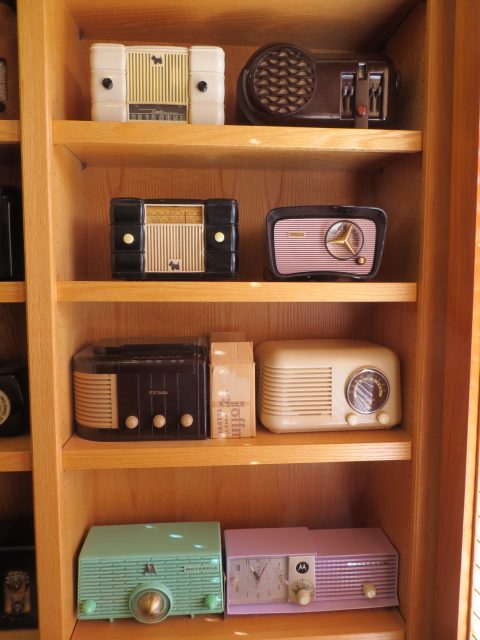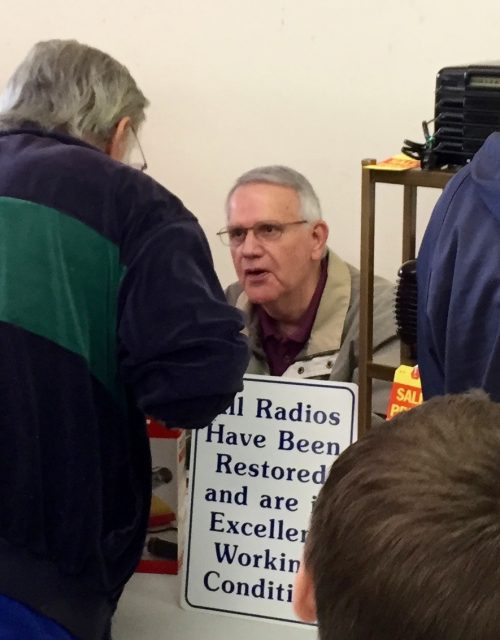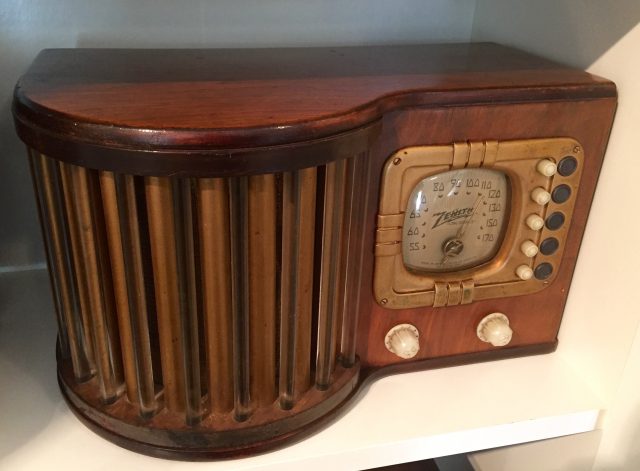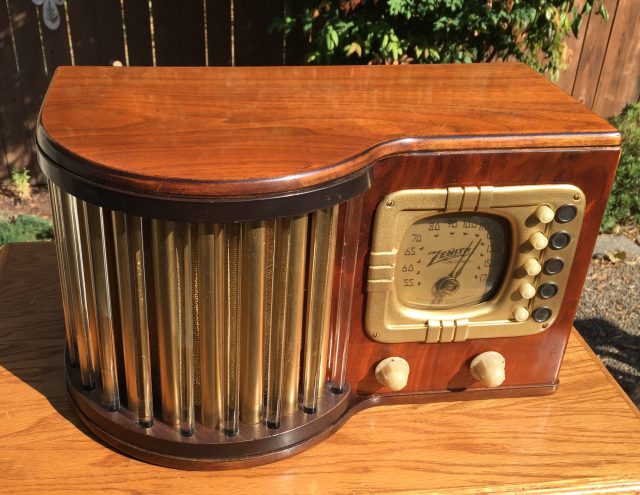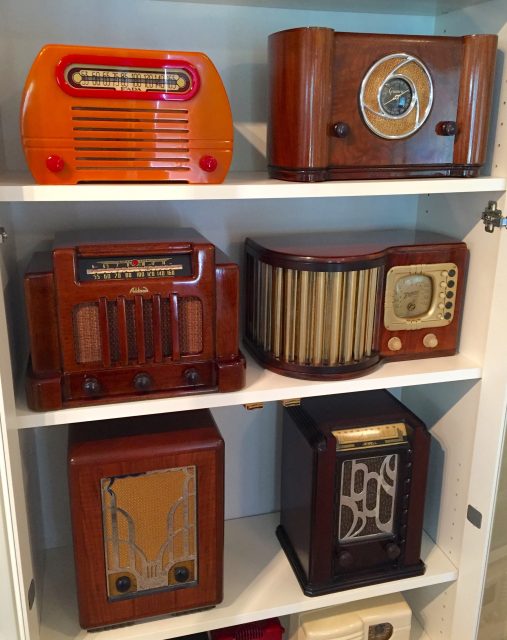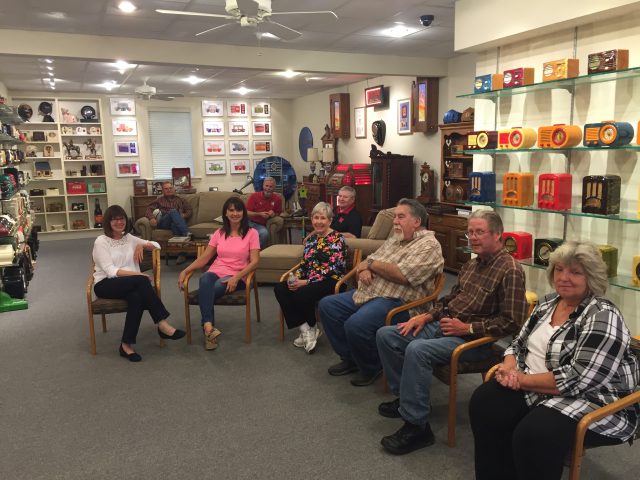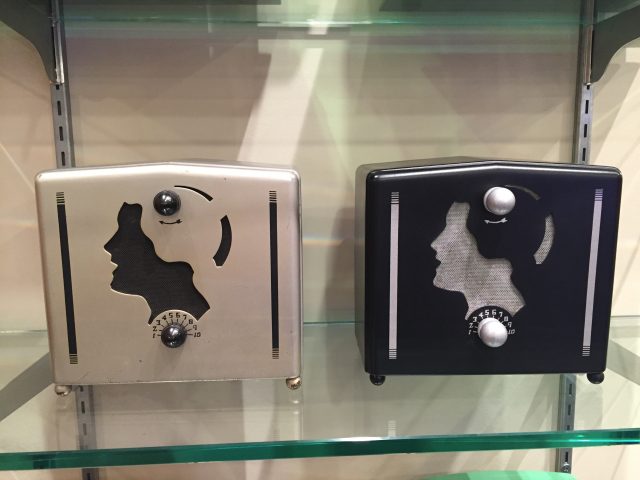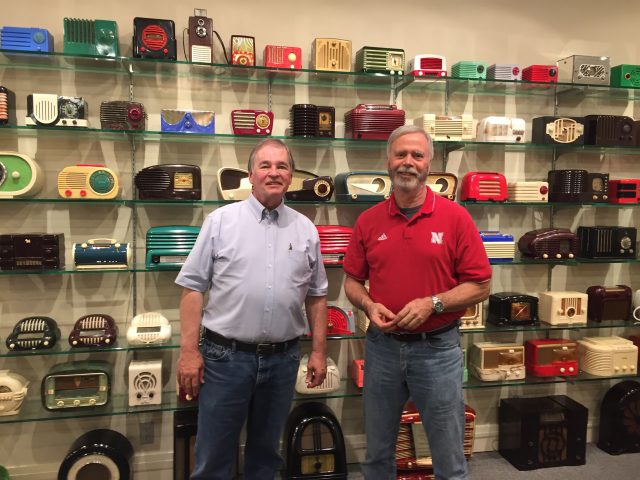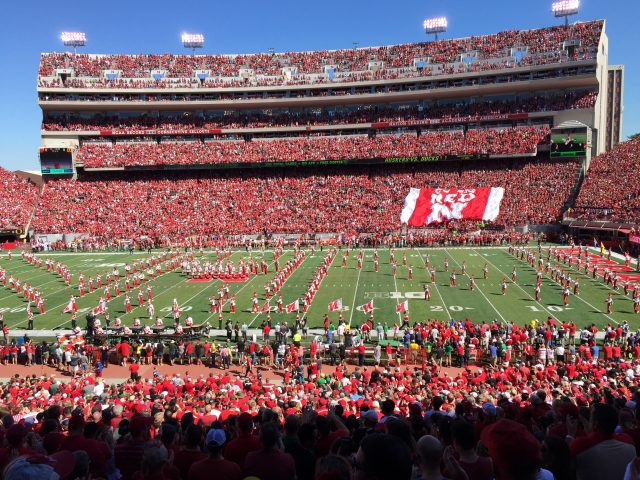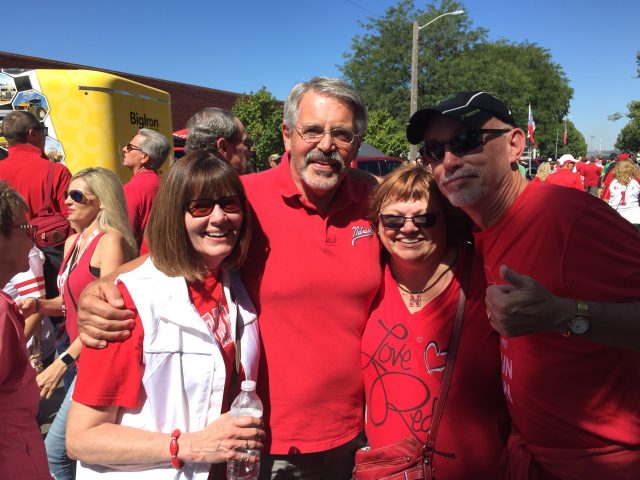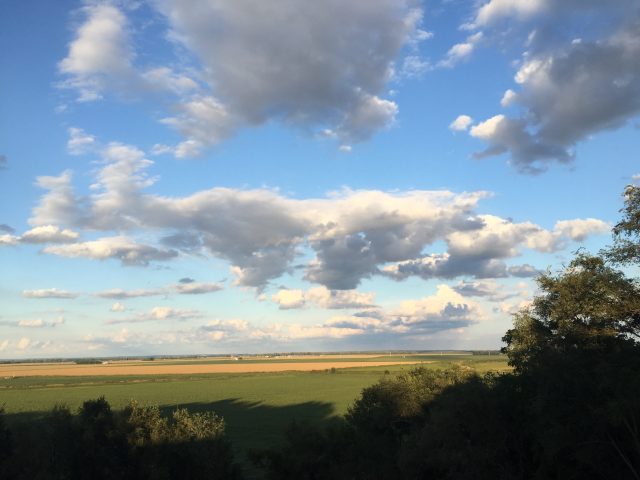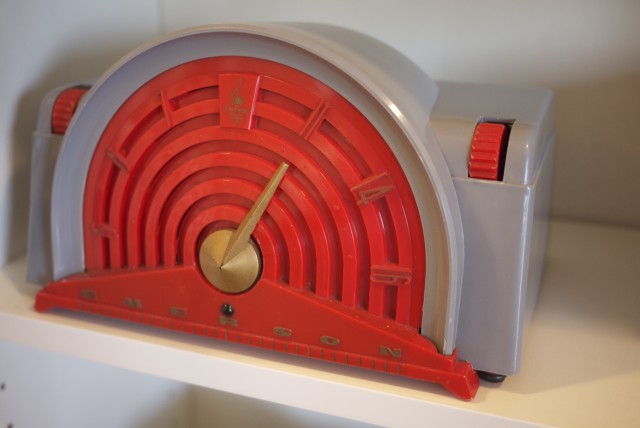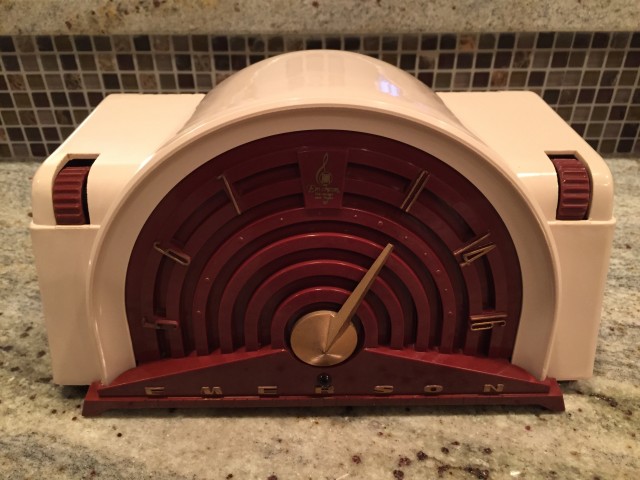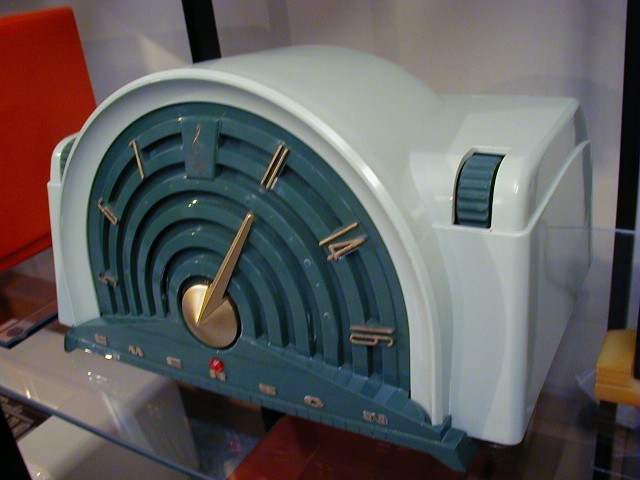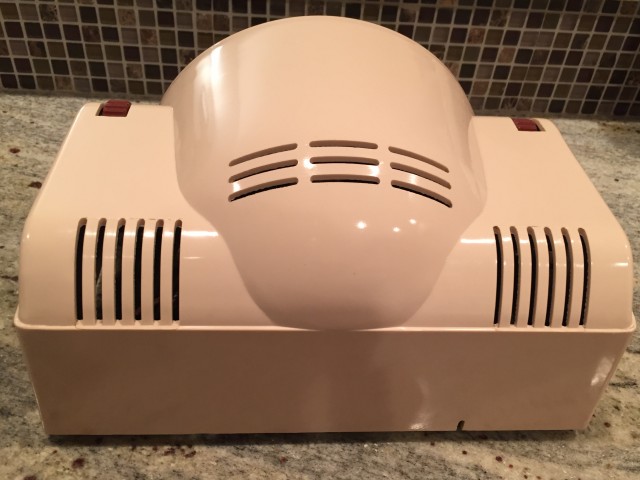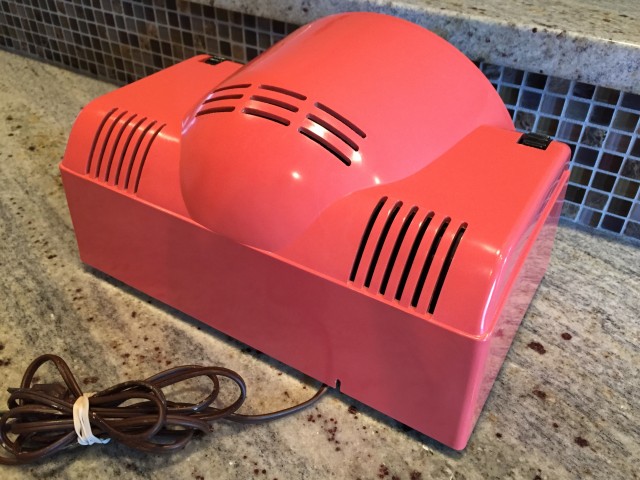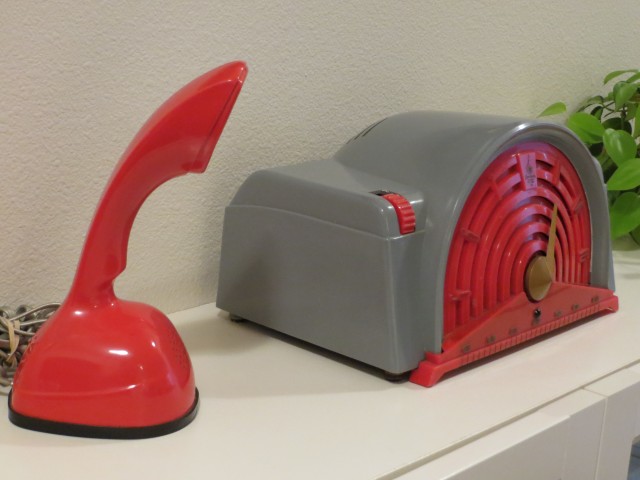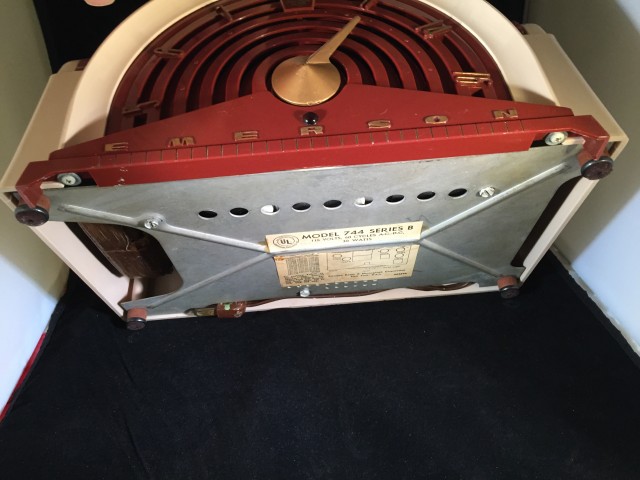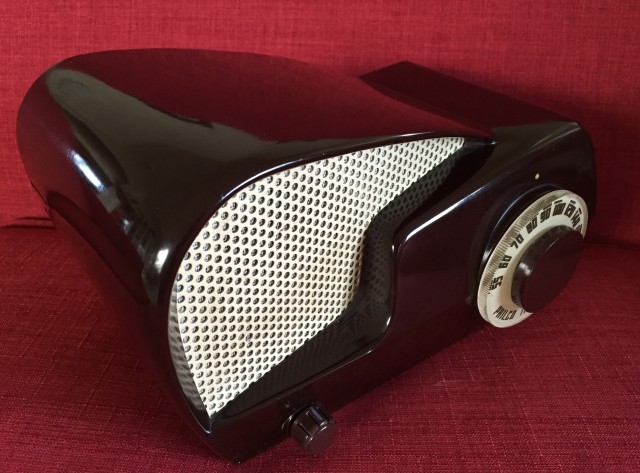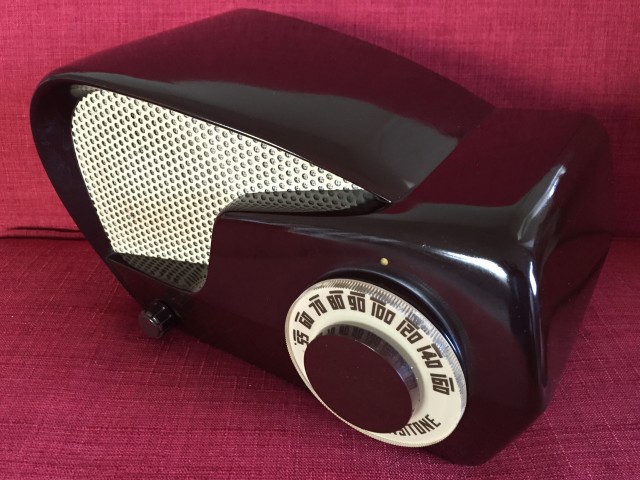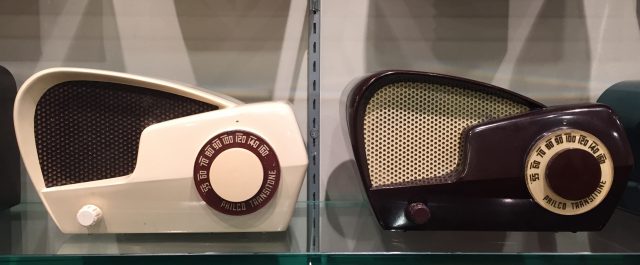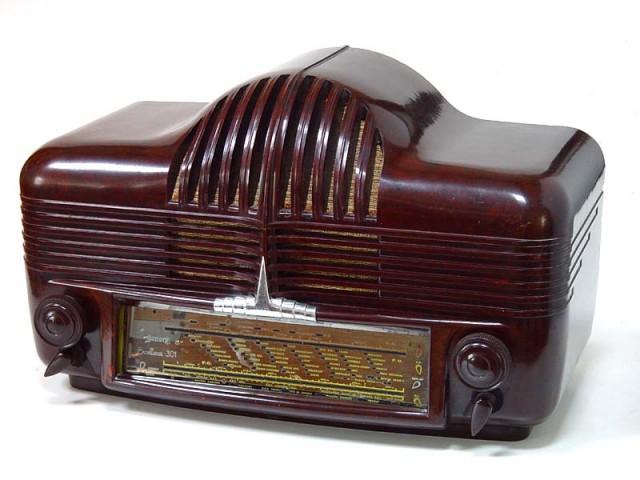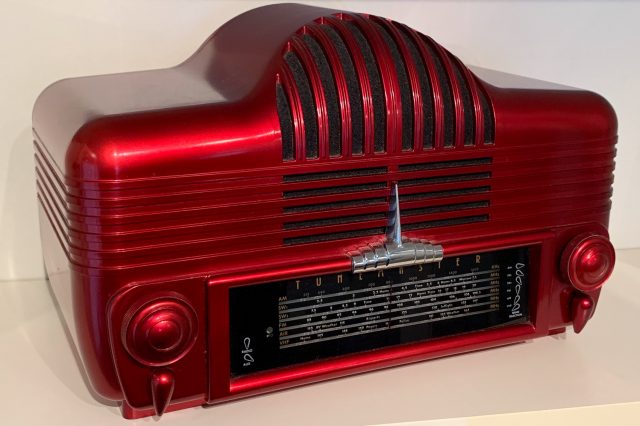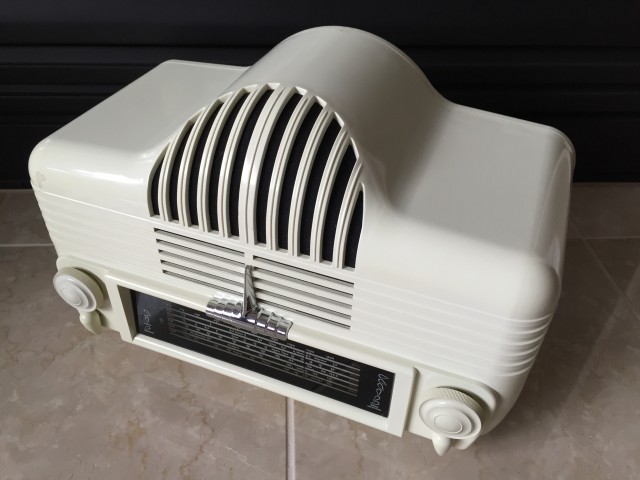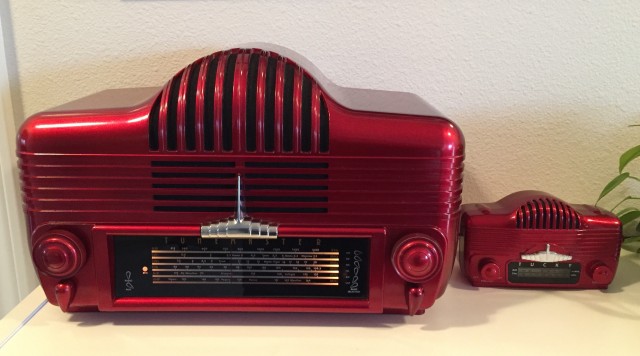
The 1933 Air King “Skyscraper” is so innovative and cool, it’s included as the first radio in John Sideli’s classic book on Catalin radios…even though it’s not Catalin!
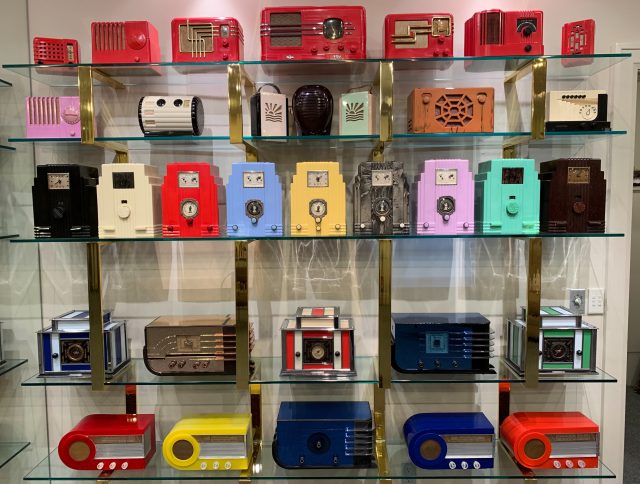
Some Air King Skyscrapers made of colorful Plaskon, like the five below, have gone for $40,000 to $50,000 each in auctions and private sales.
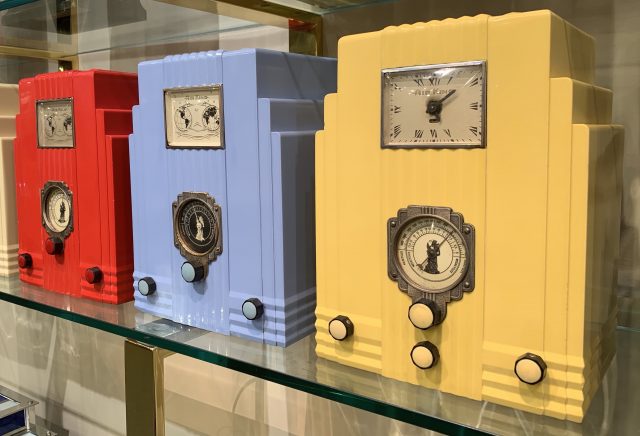
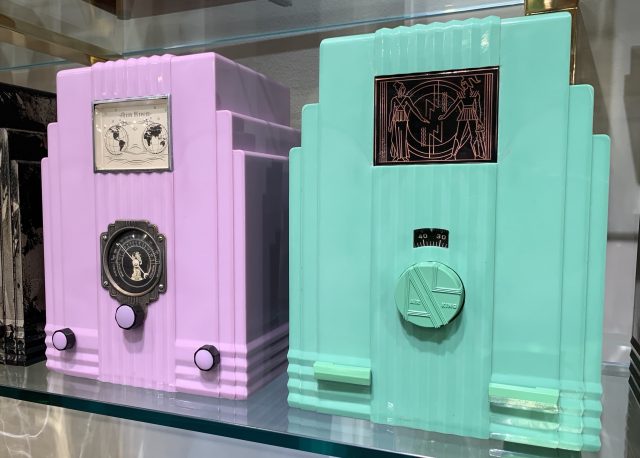
An eye-catching example of the crystalline finish in black: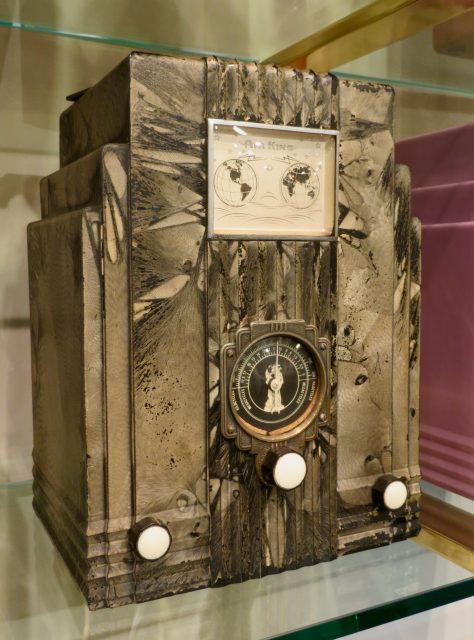
All of the above Air King Models 52 (Egyptian) & 66 (Clock or Globes) are part of Hugh & Jane Hunt’s impressive collection.
In 1933, it was unprecedented to offer radios in such a colorful array of choices. According to my research…Plaskon versions were available in red, blue, green, yellow, lavender, ivory, and white. Bakelite versions were available in brown and black. And the crystalline finishes were only available in black and ivory…you saw the black above, and now the ivory: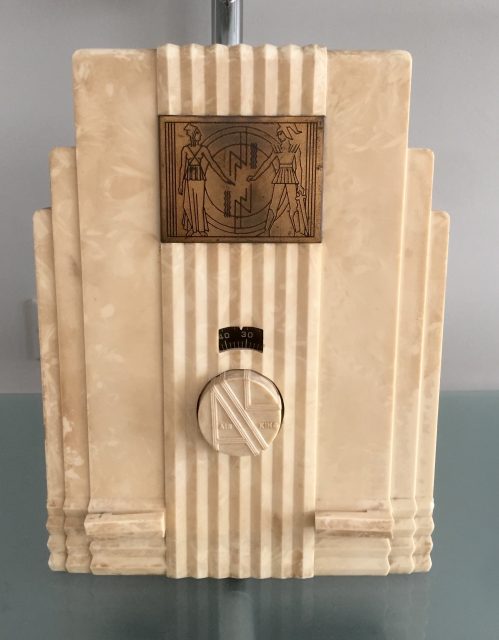 The crystalline finish is a smooth clear-coating that at times oxidized to show copper or gold tones. Some collectors call it a “Flake Finish”.
The crystalline finish is a smooth clear-coating that at times oxidized to show copper or gold tones. Some collectors call it a “Flake Finish”.
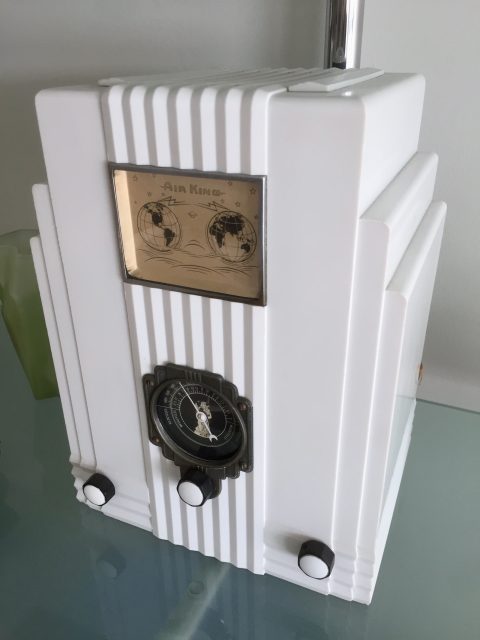 Here’s an elegant pure white Air King. Thanks to GR, a collector in Florida, for the two impressive examples above.
Here’s an elegant pure white Air King. Thanks to GR, a collector in Florida, for the two impressive examples above.
A close up of the speaker grille on top: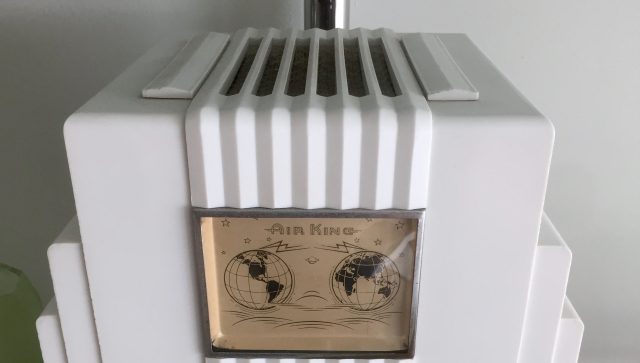
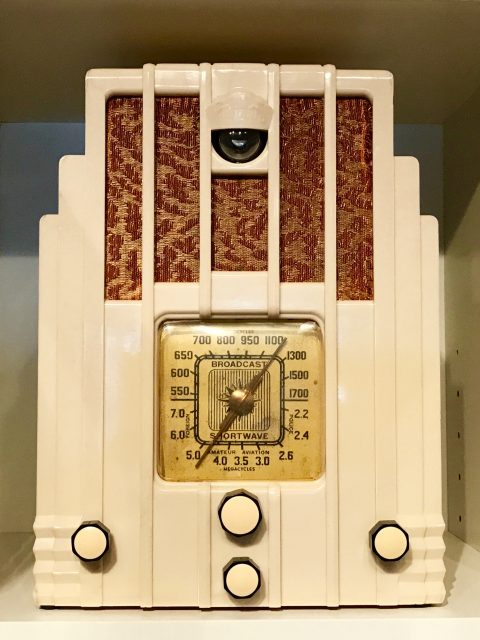 This is my one lonely Air King Skyscraper. It’s the Model 770 from 1937. Not as cool as the 1933 versions, but still a nice collectible radio. This model obviously has the speaker in the front, and has an added tuning eye. Skyscrapers tend to look bigger in photos than in person. They’re only about 12-inches high, 9-inches wide, and 7-inches deep. According to Sideli, it was a major step forward to mold a plastic case of this size in 1933, when most radios were made of wood. The design is by Harold Van Doren. He had many excellent streamlined industrial designs in the 30’s, 40’s & 50’s, including the first two-door refrigerator.
This is my one lonely Air King Skyscraper. It’s the Model 770 from 1937. Not as cool as the 1933 versions, but still a nice collectible radio. This model obviously has the speaker in the front, and has an added tuning eye. Skyscrapers tend to look bigger in photos than in person. They’re only about 12-inches high, 9-inches wide, and 7-inches deep. According to Sideli, it was a major step forward to mold a plastic case of this size in 1933, when most radios were made of wood. The design is by Harold Van Doren. He had many excellent streamlined industrial designs in the 30’s, 40’s & 50’s, including the first two-door refrigerator.
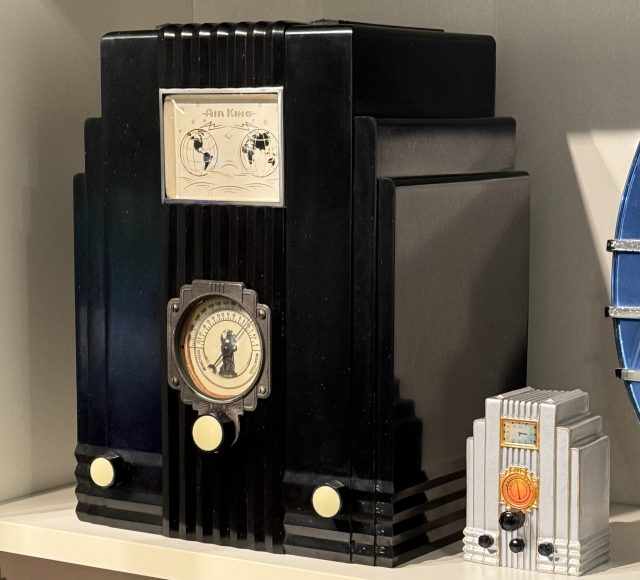 Update: Bought this black 1933 Air King Model 66 in November of 2024.
Update: Bought this black 1933 Air King Model 66 in November of 2024.
GR from Florida provides this wonderfully dramatic ivory and black “Egyptian” model:
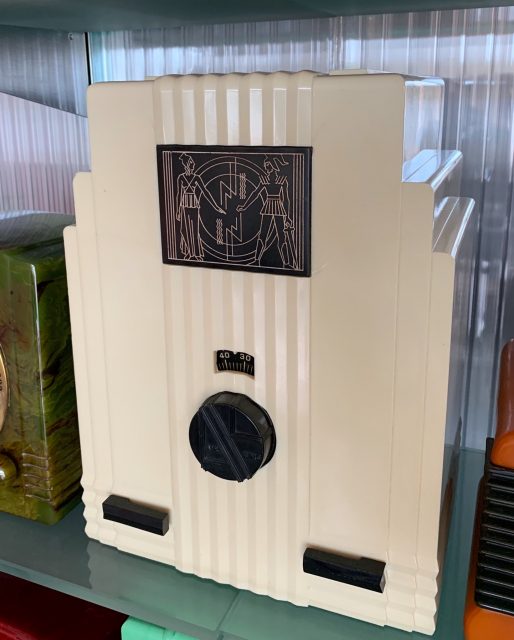
Here are three additional Model 770 finds by GR. These are “didn’t know they existed!” versions. Just check out the dazzling colors of these Plaskon (not painted) Skyscrapers.
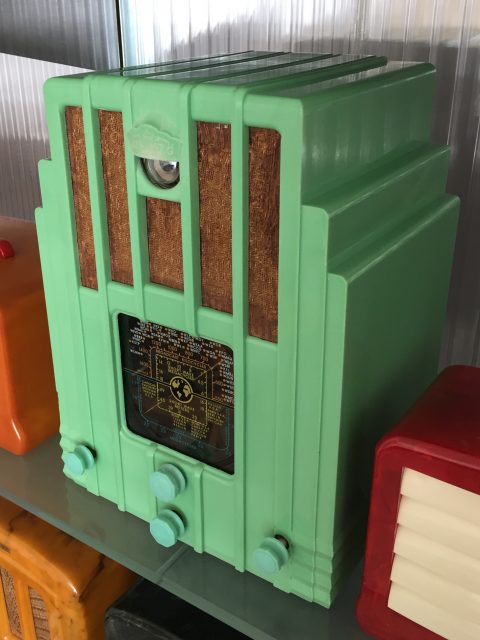
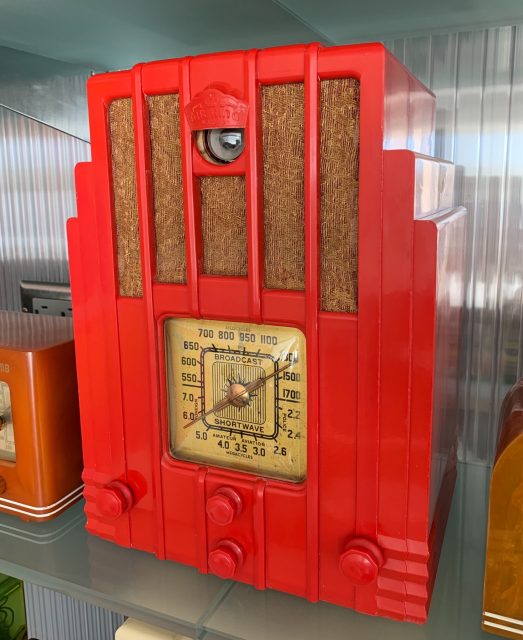
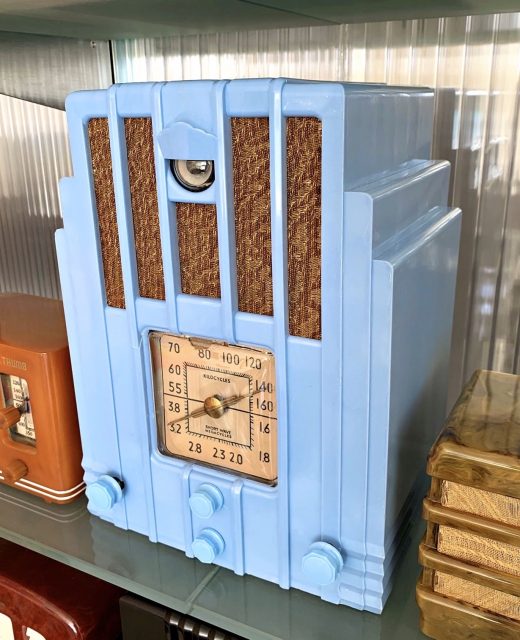
The vivid green Air King is an export model that GR discovered in South America. The bright red 770 is the American version, but that red color makes it extremely rare. And finally, look over that beautiful blue Plaskon Skyscraper. It was made by Air King, but it was sold under the Lafayette brand. That’s why “Air King” is not imprinted above the tuning eye, and why it has a different dial. (You can click or touch any of the photos to check out the radios more closely.)
Thank you to GR for helping expand our knowledge of how many different versions of Air Kings were manufactured.
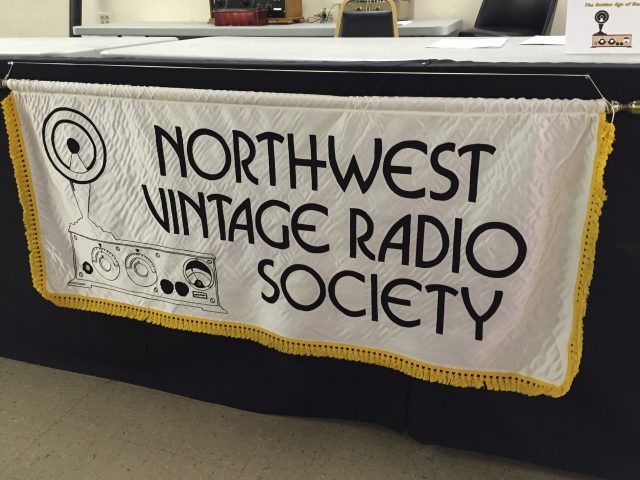
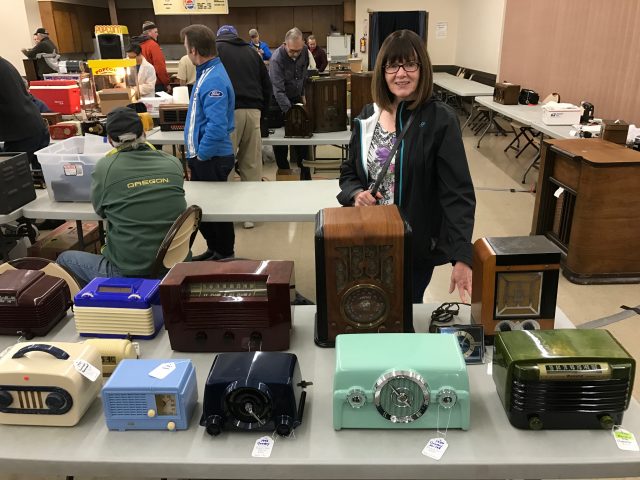 My wife, Jeannette, helped bring in all of the radios from our vehicle, and took care of our table while I checked out the other tables. Unfortunately for me, only a limited number of club members are into collecting Catalin, Bakelite, and other plastic radios.
My wife, Jeannette, helped bring in all of the radios from our vehicle, and took care of our table while I checked out the other tables. Unfortunately for me, only a limited number of club members are into collecting Catalin, Bakelite, and other plastic radios.